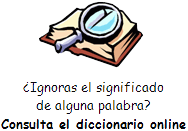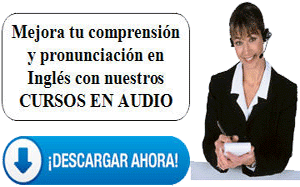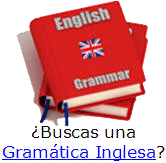 English
can be a complex language to master. It has a lot of rules – and breaks
many of them. English
can be a complex language to master. It has a lot of rules – and breaks
many of them.
No matter your level of English, forming questions can be one of the
more vexing parts of mastering the language. The good news is that we
are here today to make that process easier.
In a recent Everyday Grammar, we told you about subject questions –
questions we ask when we want to learn the who or the which of an action.
Today, we will tell you about yes or no questions.
A yes or no question is a question that expects an answer of “yes” or
“no.” For example:
Are you coming to the show?
Has she been to Montreal?
Does this color look good on me?
As you can hear, yes or no questions do not begin with common question
words such as “why,” “where,” “what,” “how,” “when,” and “which.”
Using Auxiliaries
Instead, they often begin with the verbs “do,” “be” or “have.” You
already know these three verbs as among the most common in English. But
they have a second, separate usage: as auxiliary verbs.
We use auxiliary verbs with main verbs to do things like form questions
and verb tenses. Auxiliary verbs are sometimes called “helping verbs”
because they help main verbs to carry meaning.
We form yes or no questions with an auxiliary verb + subject + main verb.
Listen for that structure in the examples:
Are you coming to the show?
Has she been to Montreal?
Does this color look good on me?
‘Do’ ‘does’ and ‘did’
Notice that the last example begins with “does.”
When we use “do,” “does,” or “did” to begin a yes or no question, it
shows there was no auxiliary present in its statement form.
Present simple and past simple statements do not contain auxiliary verbs.
For example, the statement form of the question “Does this color look
good on me?” is “This color looks good on me” and is present simple.
Let’s hear a few more statements and their question forms. Notice that
the statements do not contain an auxiliary verb. And, the questions
follow the same structure, auxiliary verb + subject + main verb:
I went to the kitchen.
Did you go to the kitchen?
You speak English well.
Do you speak English well?
He lives in Washington, D.C.
Does he live in Washington, D.C.?
Using Modals
Not all yes or no questions begin with auxiliary verbs. Many begin with
modal verbs. We use modal verbs to express possibility, necessity and
permission. Sometimes, modal verbs are called “modal auxiliaries.” But,
for today, we will simply call them “modals” or “modal verbs.” “Can,” “could,”
“may,” “might,” and “should” are examples of modal verbs.
We form these yes or no questions with a modal verb + subject + main
verb. Listen for that structure in these examples:
Can we meet for lunch tomorrow?
Should I take her advice?
May I have your name, please?
Be + subject
Some yes or no questions have neither an auxiliary nor a modal. When we
ask yes or no questions where the main verb is “be,” the structure
becomes be + subject. Let’s hear how that sounds:
Is she the owner of the company?
Was he ready when you arrived?
Are you a language teacher?
Other verb tenses
At times, there is more than one auxiliary verb in a yes or no question.
Or, there is a modal verb plus one or more auxiliary verbs. This happens
in yes or no questions with perfect tenses and with passive questions.
For example, in the question, “Should I have been attending all of the
meetings?” the verb tense is present perfect continuous. There is the
modal “should” and the auxiliaries “have” and “been.”
But, for today, we’ll stay with basic forms of yes or no questions. The
goal is that you gain confidence in forming these questions. And, that
comes with practice.
Answering yes or no questions
By now, you might be wondering: How do I answer a yes or no question?
You can answer with a simple “yes” or “no.”
But, suppose you wanted to answer with something a little longer. When
we answer yes or no questions, we do not usually repeat the full
question. Instead, we answer with the auxiliary or modal from the
question. The structure is yes or no + subject + auxiliary or modal.
Here’s what it sounds like with auxiliaries:
Did you go to the bathroom?
Yes, I did.
Has she been to Montreal?
Yes, she has.
Are you a language teacher?
Yes, I am.
And, with modals:
Should I take her advice?
No, you shouldn’t.
May I have your name, please?
Yes, you may.
Can we meet for lunch tomorrow?
Yes, we can.
Notice that the auxiliary or modal in each answer matches the auxiliary
or modal from each question.
|
 Sugerencias:
Sugerencias:![]() ). Utiliza el botón derecho del ratón y "guardar enlace" para
descargar el fichero a tu PC, tablet, Smartphone, etc.
). Utiliza el botón derecho del ratón y "guardar enlace" para
descargar el fichero a tu PC, tablet, Smartphone, etc.
![]() Escucha el audio
Escucha el audio
![]() ¿Quieres recibir en tu e-mail gratis y
periódicamente ejercicios, programas gratuitos, explicaciones y otros recursos
para mantener tu inglés sin esfuerzo? Apúntate a nuestro
cuaderno mensual de inglés.
¿Quieres recibir en tu e-mail gratis y
periódicamente ejercicios, programas gratuitos, explicaciones y otros recursos
para mantener tu inglés sin esfuerzo? Apúntate a nuestro
cuaderno mensual de inglés.




